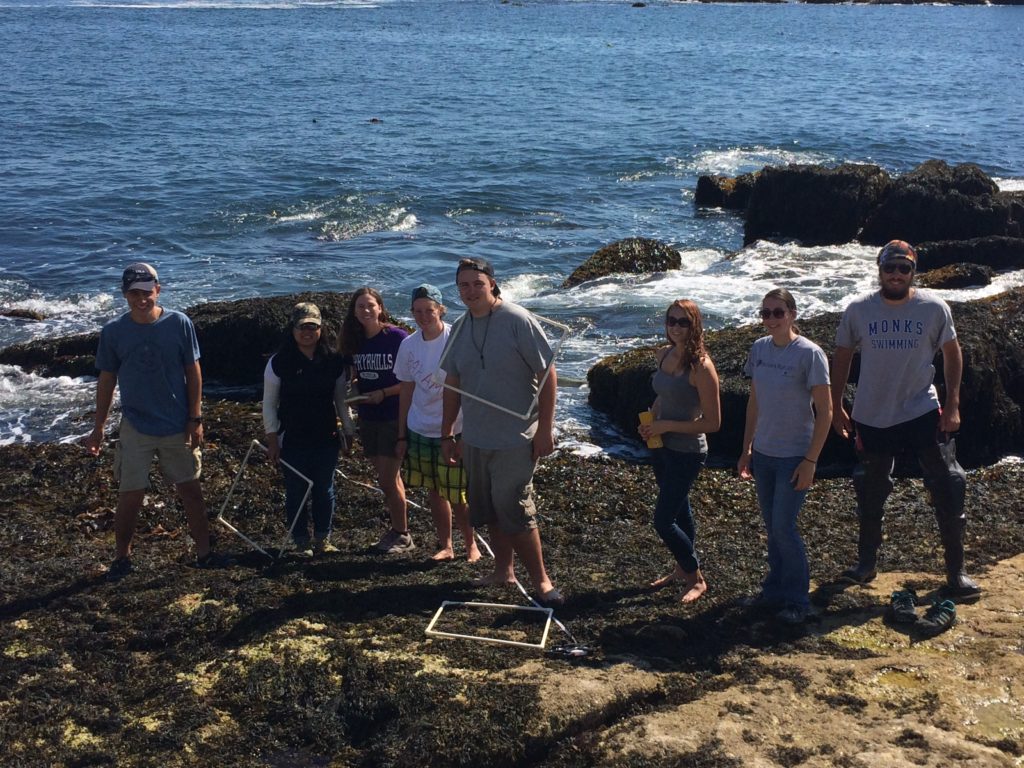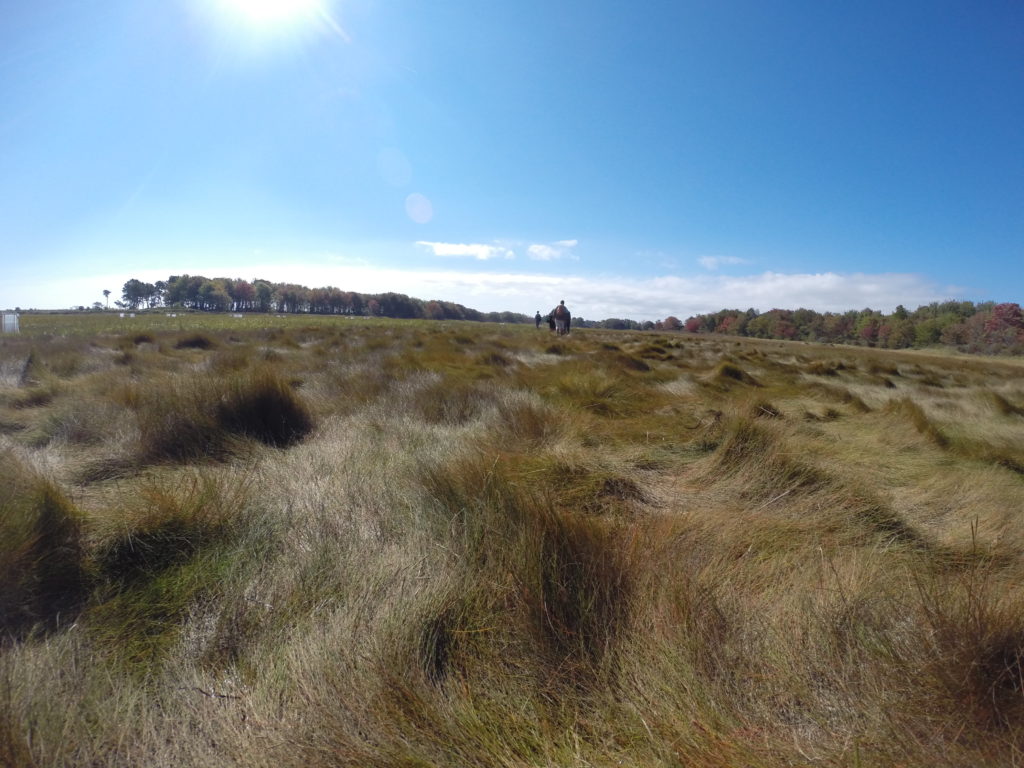Ingrained in our memory by Dr. Teegarden is the answer to some important questions about intertidal zones along ocean beaches.
First Question: Where does Marine Ecology start? Answer: Observing patterns of abundance and distribution.
Second Question: How do you figure out the cause for the pattern of abundance and distribution? Answer: By identifying processes, then forming a hypothesis about how the physical and biological forces caused the pattern to occur.
Third Question: What is the main pattern found in the intertidal zone? Answer: The main pattern found in the intertidal zone is zoned layering of different organisms.
Fourth Question: What causes the zonation in the intertidal zone? Answer: Some of the major factors include: competition, ability to survive despite certain stresses, and predation.
This may sound like absolute craziness to someone who had not spent 3 weeks learning about Marine Ecology during the ESS. Though next time you go to a rocky beach or salt marsh at low tide I would like to challenge you to look for something we have now learned to see. There will be layers of different types of organisms (plants for salt marshes,seaweed and barnacles at the rocky coast). Some will be closer to the water, some will live farther away from the water, and scientists have spent countless hours figuring out the reasons.
In the rocky intertidal zone organisms prefer to spend more time in the water and avoid desiccation. The organisms closer to the water at low tide spend more time under the water and are better competitors meaning they are able to beat out other organisms that would want to live there. Why don’t those organisms control the entire zone? This is because they are not able to survive the exposure (a stress) out of water that the organisms above them can. So in summary, what causes this “zonation?” First: competition for more time spent in the water. Second: ability to deal with exposure out of the water.
 With salt marshes this pattern of competition and stress is in the opposite order. Organisms that live further away from the water are the stronger competitors. The salt is in this case the stress and is harmful to the plants, some of which have adapted ways such as pulling the salt from their roots up through their stem and out the leaves.
With salt marshes this pattern of competition and stress is in the opposite order. Organisms that live further away from the water are the stronger competitors. The salt is in this case the stress and is harmful to the plants, some of which have adapted ways such as pulling the salt from their roots up through their stem and out the leaves.
But this is for only 2 places out of the many of places we have visited and because of that there are countless structures. For our friends and family out there you may understand why we can never look at these areas the same way again. For that new-found understanding we thank the boundless knowledge banks both Dr. Teegarden and Dr. Erikson have shared with us.
Matt Pfannenstiel

